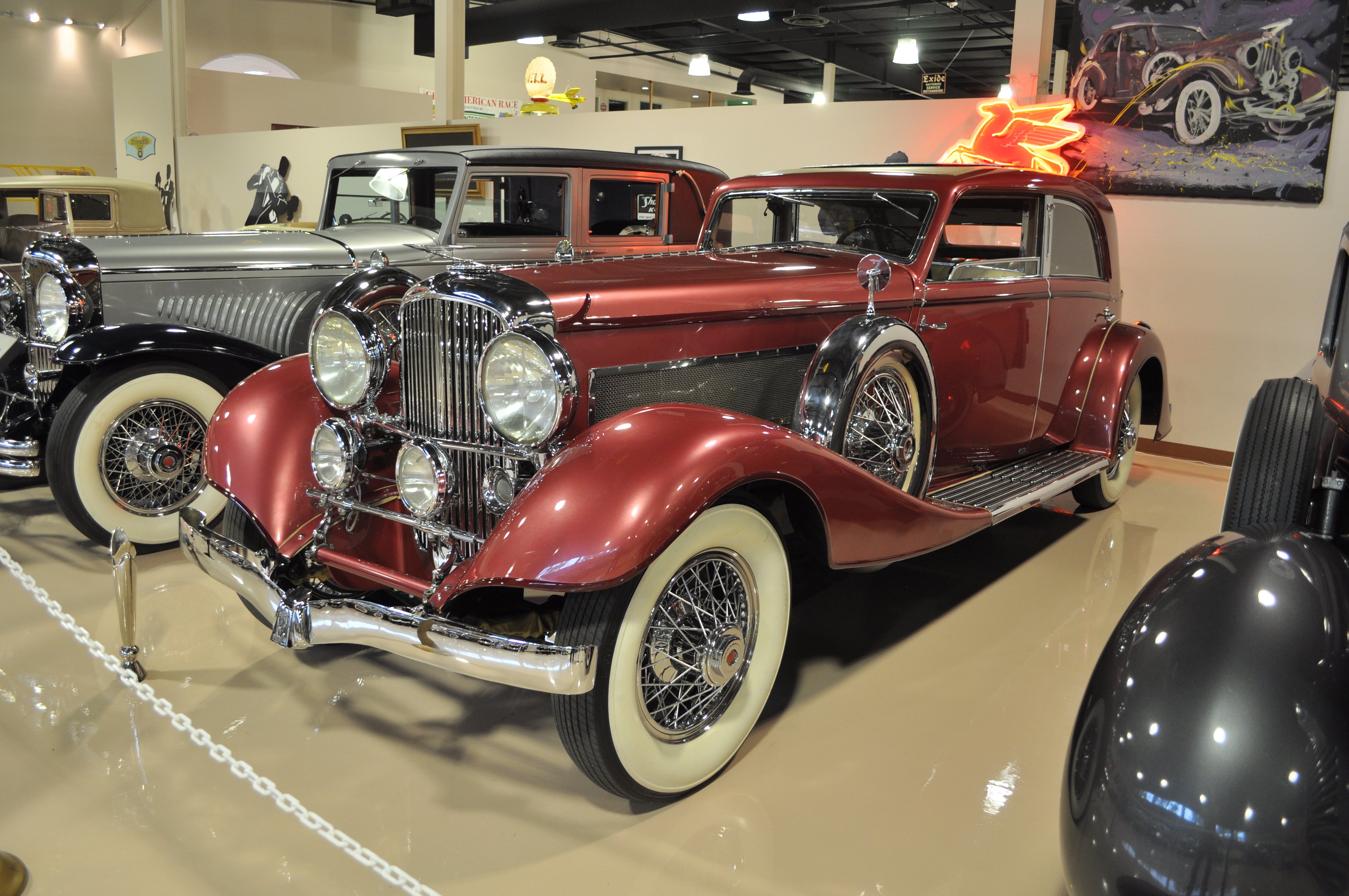 |
1933 Duesenberg Model J Touring Sedan
Engine: Lycoming Straight 8
Displacement: 420 Cubic Inches
Horsepower: 265 BHP
Cost New: Estimated $19,000
It is often said that the most rare and distinctive of all Duesenbergs are the few, exclusive models that were assembled by the great European coach builders. The mighty Duesenberg J Series was an exotic, imposing and elite automobile. It was far superior in concept and execution from even the largest and most powerful European vehicles. Any Duesenberg J was sure to be the center of attention at any show or concours d'elegance at which it appeared, and they served the coach-builders and clients as a rolling advertisement. This irresistible interest led the few Duesenbergs bodied in England and Europe to receive the coach-builders' most extravegant and beautiful designs. This stunning example, crafted by Jean-Baptiste Franay is no exception, and its amazing appeal is only rivaled by the air of mystery, intrigue and excitement which surrounds its first owner, the Countess Proceri.
Shipped to France in 1930 as a chassis and engine, the J-365 was apparently first bodied by Kellner Frères of Paris as a town car. It was re-bodied by the firm of Carrosserie Franay with the elegant sports sedan coachwork, which still graces its original chassis, firewall and engine today. It was shown at the Paris Salon in 1931 in a two-tone paint, and a year later again in a monotone color. In early 1934, still essentially a new car, it was sold to its first private owner, the Countess Proceri, well known to the tabloid press of the day as the "Queen of Diamonds."
The Countess had the intangible spark of life, liberty, talent, determination, independence, personality and style that distinguished many of the bright and adventurous young ladies of the late Twenties and early Thirties. She was born plain Mabel Boll in Rochester, New York in 1985, but quickly became famous as being the beautiful wife of Colombian coffee magnate Hernando Rocha in 1922.
It was Rocha who helped her gain her famous nickname when he gave his new wife a million dollars worth of jewelry, mostly diamonds, and which Mabel wore every time she appeared in public. The press loved her extravagant style and her exploits were frequently featured in many newspapers and magazines. Rocha died not long after they were married, the first of Mabel's five husbands, and she was left with a large inheritance and a thirst for adventure.
In the late Twenties, Mabel discovered aviation and Charles A. Levine, a wealthy adventurer with a fortune made in scrap metal from World War I, and whose tough, contentious appearance foreshadowed James Cagney. Levine was trying to beat Charles Lindbergh as the first to fly across the Atlantic, but was delayed by legal proceedings. Levine settled for being the first passenger to fly across the Atlantic with pilot Clarence Chamberlain in the "Colombia," just two weeks after Lindbergh had made his historic flight. Levine, sometimes known as the "bad boy of aviation," began an affair with the widowed Mabel, and they joined pilot Wilmer Stultz in an attempt to beat Amelia Earhart as the first woman to cross the Atlantic by air. They were delayed by bad weather and Amelia beat them by days. The trio did make several important long distance flights, which captured the fancy of the day, including a non-stop flight from New York to Havana.
Mabel and Levine separated in April, 1931, "Time" magazine recorded the marriage of Mabel "Queen of Diamonds" Boll to Count Henri de Porceri, who was born in Poland and became a U.S. citizen. They were married in Paris and traveled extensively. In early 1932, the Countess acquired the J-365 Duesenberg, putting the car in her own name, and not her husband's. They were divorced after five short years of marriage. Mabel died in 1949 and still possessed many of the jewels she had collected over her life. One of them was a rock that had cost $75,000 at Tiffany’s, and was bought by jeweler Harry Winston from her estate. The stone, now known as "The Mabel Boll," was reworked by Winston and is still a whopping 44.76 carats.
The "Queen of Diamonds" Duesenberg is a stunning example of the beauty and grace that Duesenberg offered. It is believed to be one of only two Duesenbergs originally built with a sunroof. The vehicle was given a concourse-quality restoration in 1975 by Chicago jeweler Marvin Cohen. During this time, several modifications were made, including enhancing and integrating the sloping roof and body line by taking off the built-in trunk, lengthening the hood, replacing the side louvers with chromed screens, and painting the body in its current metallic strawberry.